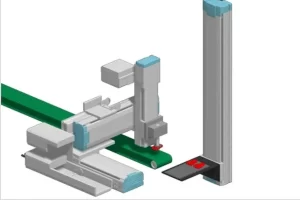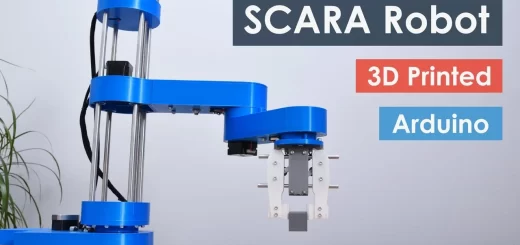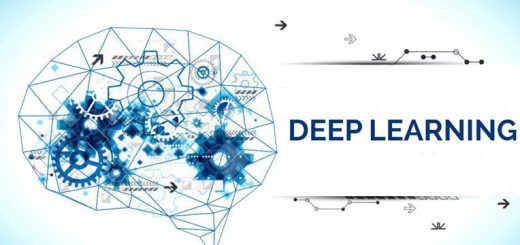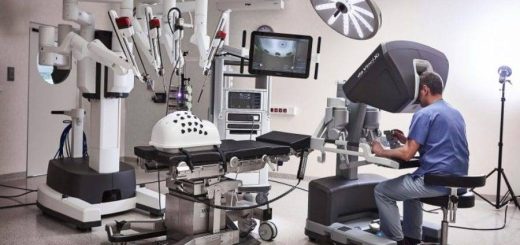Cartesian robot importance, risks, applications and How fast is the Cartesian robot?
A cartesian robot is also known as a linear robot, It is an industrial robot that uses a rectangular coordinate system for movement. Cartesian robots have three principal axes of control that are linear (meaning they move in a straight line) and are perpendicular to each other. Imagine the X, Y, and Z axes of a graph. These axes allow the robot to move an object or tool up and down, side to side, and back and forth with high precision.
Cartesian robots
Cartesian robots are a versatile and reliable type of robot that can be used in a wide variety of applications. They are powered by linear actuators, which are motors that drive motion in a straight line. Because they move in straight lines, cartesian robots are easier to program than other types of robots, like articulated robots. Their simple design allows for very accurate positioning.
Cartesian robots are adept at picking up objects from one location and placing them in another location. This makes them ideal for assembly line applications. The extruder on a 3D printer essentially functions as a cartesian robot, precisely moving in X, Y, and Z directions to deposit material and create a 3D object.
Cartesian robots are also called gantry robots, They can be used to move heavy or bulky objects around a workspace. They can be used to apply precise amounts of liquids or other materials to a surface.
A cartesian robot is controlled by linear axes that move in straight lines along three perpendicular directions. These directions are usually designated X, Y, and Z, which corresponds to moving the arm up and down, in and out, and forward and backward. Think of it as a three-dimensional version of a mouse controller.
Cartesian robots are known for their high precision and repeatability, making them ideal for tasks that require accuracy, such as 3D printing, Pick and place operations in assembly lines, Material Handling, Machine loading and unloading, and Painting and coating applications.
Cartesian robots are a great choice for applications that prioritize precision, speed, and cost-effectiveness in a controlled environment. However, their limited workspace and inflexibility might make them less suitable for tasks requiring a wider range of motion or tight spaces.
What is the use of Cartesian robots?
Cartesian robots, with their precise movements along linear axes, excel in various tasks requiring high accuracy and repeatability. Here are some applications:
- Pick and Place: In assembly lines, cartesian robots move parts from one location to another with pinpoint accuracy, perfect for delicate tasks or intricate component handling.
- Material Handling: They handle various materials, from heavy objects in construction to delicate electronics in manufacturing. Their precise movements ensure safe and efficient material movement.
- Machine Loading and Unloading: Cartesian robots can precisely load and unload workpieces into machines like CNC mills, lathes, or 3D printers, streamlining production processes.
- Additive Manufacturing (3D Printing): The X, Y, and Z movements of cartesian robots control the extruder or deposition head in 3D printing, ensuring accurate layering of materials to create complex objects.
- Plasma/Laser Cutting: The controlled movements allow for the precise cutting of various materials with a laser or plasma torch. They can follow intricate designs to create clean and accurate cuts.
- Wood Routing: Similar to plasma cutting, cartesian robots can guide a router bit to carve designs or shapes into the wood for furniture making or signage.
- PCB Assembly: These robots can handle delicate electronic components with high precision, placing them accurately on printed circuit boards during the assembly process.
- Inspection Systems: Their precise movements make them suitable for moving cameras or sensors to inspect products for defects or ensure quality control.
- Other Applications: Beyond these, cartesian robots find uses in tasks like dispensing liquids, sorting objects, packaging products, and theatrical automation for moving stage sets or lights.
Importance of cartesian robots
Simple Design and Programming: Compared to robots with rotary axes, cartesian robots are easier to program and maintain due to their simpler linear movements. This translates to faster setup times and lower maintenance costs. Their cartesian coordinate system (X, Y, Z) simplifies calculating and defining robot movements.
Speed: Linear motors can accelerate quickly and move swiftly along straight paths, making them efficient for high-speed pick-and-place operations or material handling. Linear motors are efficient for tasks requiring fast and repetitive motions.
High Precision and Repeatability: Their rigid structure with linear motions minimizes wobble, allowing them to achieve consistent and accurate positioning. This makes them ideal for tasks requiring exact placement, like assembling delicate electronics or CNC machining or picking and placing parts.
Scalability: The size and travel distances of each axis can be customized to fit specific workspaces and payload requirements. This allows for building large robots to handle heavy loads or smaller ones for intricate tasks. The size and power of a cartesian robot can be customized based on the application. Axes can be extended to create a larger workspace for handling bigger objects.
Cost-effective: Due to their simpler design and lower maintenance needs, cartesian robots can be a more affordable option compared to some complex robotic systems.
Drawbacks of Cartesian robots
Limited Workspace: Cartesian robots operate within a rectangular workspace, which may not be suitable for tasks requiring omnidirectional movement or reaching around obstacles. Their rectangular workspace may not be suitable for tasks that require a wider range of motion and confine their reach.
Large Footprint: Their base structure can take up a significant amount of floor space compared to some other types of robots., especially for robots with large travel distances. This can be a concern for facilities with limited space.
Less Flexibility: Since they move in straight lines, cartesian robots lack the flexibility of articulated robots that can bend and reach into tight spaces. This might limit their use in applications requiring complex maneuvers. The straight-line movements limit their ability to perform tasks requiring complex motions or omnidirectional movement.
You can subscribe to Science Online on YouTube from this link: Science Online
You can download Science Online application on Google Play from this link: Science Online Apps on Google Play
Serial Robots review, advantages, disadvantages and what can serial robots do?
Collaborative robot arm (cobot robots) applications, uses, advantages and disadvantages
Automation in manufacturing uses, advantages and disadvantages
Industrial robot (Auto industry) uses, advantages and disadvantages




